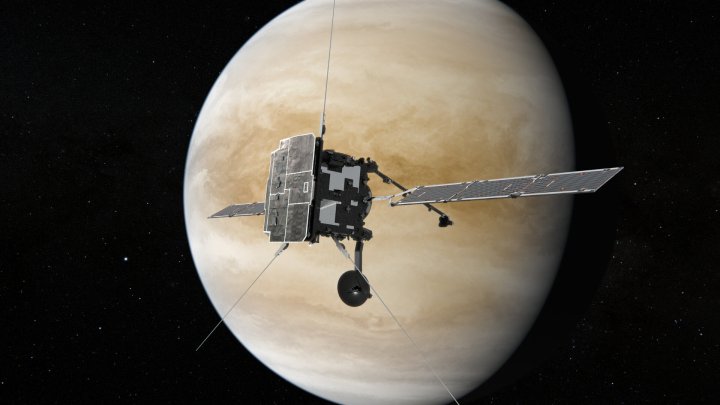
Mars might be the planet in our solar system that gets the most attention from visiting spacecraft, but this week, Venus will be entering the spotlight. The planet will host not one but two visitors as two different craft perform flybys to gain a gravitational boost on their way to other destinations. But the mission operators won’t let this chance to gather some extra information on Venus go to waste, so both craft will be collecting data as they go by.
The first visitor, due to perform its closest approach to Venus on Monday, August 9, is NASA and the European Space Agency (ESA)’s Solar Orbiter. This craft is designed to study the sun, but to get to its target, it is performing repeated flybys of Venus to bring it ever closer to the heart of the solar system.
The second visitor, arriving a day later on Tuesday, August 10, is ESA and Japanese space agency JAXA’s BepiColombo, which will be studying Mercury. It has already passed by Venus before and will make its second Venus flyby to power it on to its eventual destination.

Unfortunately, neither spacecraft will be able to take high-resolution pictures of Venus as they go by because Solar Orbiter needs to remain facing the sun, and BepiColombo will be blocked by its transfer module. However, there will be the opportunity for some pics in 1024 x 1024 pixel resolution, as two of BepiColombo’s monitoring cameras will snap photos of the planet up close and as it moves away.
Plus, Solar Orbiter will attempt to use its SoloHi imager, which is designed to take photos of the solar wind, to try and capture the nightside of Venus.
One serendipitous result of the near-simultaneous flybys is that there will be data available from two different sources in two different locations, which is rarely possible with Venus. Both craft will collect data on the magnetic and plasma environment of Venus, allowing researchers to get a more complete picture of the environment, along with data from the JAXA’s Akatsuki spacecraft currently in orbit there.



